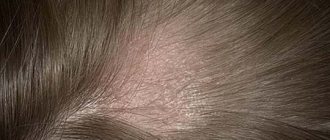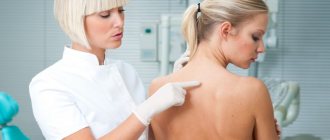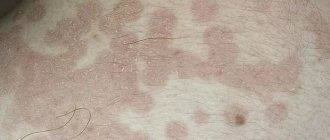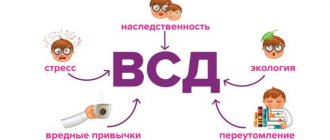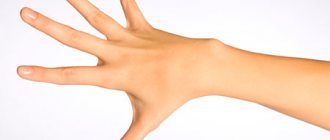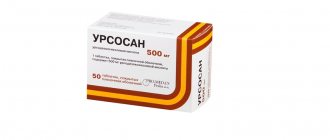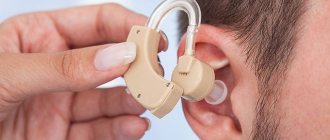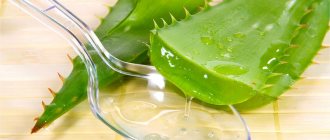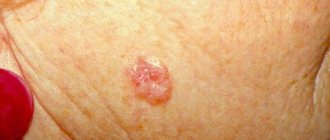Pityriasis rosea is a dermatological disease of viral, infectious or other origin. Its second name is Zhiber's disease . Most often it occurs when the immune system is weakened, after a cold or in the autumn-winter time. Is this disease dangerous and how to treat pityriasis rosea?
Also read information about another type of lichen - ringworm in humans.
Why does lichen appear on the skin?
Like dogs, cats are also carriers.
If an animal lacks fur in some areas, it is better not to approach it. Ringworm obtained from cats and dogs is more active. It contributes to a rapid decrease in immunity, which is why you can simultaneously become infected with other dangerous diseases. For the pathogen to pass from a cat to a person, short contact is enough. If after 5-14 days there is itching, red spots, suppuration of the skin, fever, weakness, drowsiness and enlarged lymph nodes, immediate consultation with a doctor is required.
Despite the harmlessness of lichen at an early stage, if you delay, it will develop into an acute form, even death. Therefore, if you have a cat at home, you should check the animal’s skin as often as possible for the presence of bald spots and inflammation, and also pay increased attention to hygiene.
But not only cats can transmit the pathogen to humans. There are cases when the owner infected the animal. True, this only applies to ringworm. At risk are kittens, old animals, cats with skin injuries and patients with demodicosis.
Ringworm has several types depending on the etiology of the disease. But there are several factors that can cause the occurrence of many types of lichen and other dermatological diseases:
- Reduced level of immunity - frequent respiratory diseases, chronic and acute diseases of internal organs, autoimmune diseases.
- Failure to comply with personal hygiene rules, using other people’s personal items: towel, underwear, comb, etc.
- Contact with an infected person or animal;
- Abuse of antibacterial agents / use of household chemicals without gloves - as a result, the barrier functions of the skin are disrupted;
- Visiting public places - sauna, swimming pool, beauty salon, which do not comply with sanitary rules. Be sure to ask the establishment administrator about this;
- Frequent injuries. In case of injuries, wounds should be treated with antiseptic solutions;
- Wearing clothes made of synthetic fabrics.
Reasons for the development of different types of lichen:
- Pityriasis rosea (Zhiber's pityriasis) is often one of the manifestations of allergies; this type is not contagious. May occur after illness or due to severe stress;
- Ringworm is an infectious disease caused by fungi; infection often occurs through interaction with stray animals or an infected person.
- Lichen planus - no specific source of the disease has been identified, appears due to a combination of factors, reduced immunity, long-term use of strong medications and untreated acute diseases.
- Shingles - caused by the herpes virus, against the background of a low level of immunity. The disease is contagious.
- Pityriasis versicolor - the disease has a fungal etiology and develops in the hot season or in a tropical climate.
Many types of lichen have similar symptoms to other skin diseases such as vitiligo, syphilis roseola, herpes, etc., so self-medication is not acceptable.
Before treating lichen using ointments, creams or tablets, it is necessary to establish its type and the severity of the disease in a person. Ointments are applied in a course, based on the main symptoms. It is also important to exclude provoking factors that led to skin damage. This could be a decline in the immune system, contact with a sick person, exacerbation of herpes, difficulties in the functioning of the nervous system, etc.
| Name | Signs |
| Pink |
|
| girdling |
|
| Shearer |
|
| Pityriasis |
|
| Name | Signs |
| Flat |
|
| Tubular |
|
| Weeping |
|
| Scaly |
|
According to numerous reviews from patients and doctors, the following creams and ointments for lichen are considered effective:
- Terbinafine works successfully against tinea and herpes zoster.
- Zovirax (and other acyclovir derivatives) has a detrimental effect on shingles.
- Miconazole is a drug with a wide spectrum of action. Particularly effective against the pityriasis type of the disease. The substance not only eliminates the causative agent of lichen, but also actively restores the affected areas of the skin.
- Hydrocortisone relieves persistent itching and pain. Used only as directed by a specialist.
- Exoderil is actively used for ringworms of the disease. Its active component, naftifine, kills pathogenic fungi and relieves inflammation.
- Nizoral actively fights the causes of eczema, dermatitis and other skin problems.
- Clotrimazole helps with the presence of color, ringworm and flat varieties of lichen. Kills most viruses and pathogenic fungi.
- Flucinar instantly relieves itching and pain that occurs in the presence of psoriasis, eczema and dermatitis.
- Mycoseptin kills fungi, soothes the skin surface, and disinfects. Shown to be highly effective in treating the ringworm type of the disease.
- Ointments created on the basis of zinc, salicylic acid, sulfur and tar: they are practically free of contraindications, which makes their use possible even in children. These drugs have the properties of eliminating inflammation, killing fungi and disinfecting the skin surface.
An effective ointment for lichen on a person’s skin will definitely be needed after diagnosing the disease. Timely identification of the type of lichen allows you to begin a drug fight against it, guaranteeing a speedy recovery.
Pityriasis rosea (pityriasis, as well as Zhiber's lichen) is a common skin disease that affects a person after a cold, viral diseases, or as a result of weakened immunity. Ringworm occurs more often in women than in men. Children are most often diagnosed with lichen between the ages of 5 and 12 years.
After a single case of the disease, a person should develop a stable body resistance to this disease, but relapses are also possible. Pityriasis rosea can recur especially when the body's defenses are reduced. Some experts claim that within a month or two the disease sometimes goes away without intervention, on its own.
But this should not be expected. It is necessary to consult a doctor and take action.
What it is?
Pityriasis rosea is an infectious-allergic skin disease of a viral nature. It manifests itself as spotty pink rashes and occurs in people with weakened immune systems. This skin disease is considered an infection, but it is not transmitted from person to person, and when asked whether pityriasis rosea is contagious, doctors answer in the negative.
Despite the fact that to date there is no exact data on the causative agent of pityriasis rosea, many experts are inclined to believe that the cause of the disease is the seventh herpes virus.
We suggest you familiarize yourself with White spots on the skin, what they are and how to treat them
However, the disease can develop in people with weakened immune systems, during pregnancy, due to hypothermia and after previous respiratory infections.
Science does not know the exact routes of transmission of the infection, but there is an assumption that it is transmitted by airborne droplets.
After recovery, the person gains lasting immunity.
In humans, the disease begins (usually against the background or soon after a cold) with the appearance on the skin of the body of a single large round pink spot with a diameter of 2 cm or more (the so-called maternal plaque), the central part of which gradually acquires a yellowish tint, seems to wrinkle and begins peel off slightly.
Usually, a few days after the appearance of the maternal plaque, multiple small oval pink spots with a diameter of 0.5-1 cm, located along Langer's lines, appear on the skin of the trunk and limbs. Gradually, barely noticeable dry folded scales appear in the center of the spots, and along the periphery there is a border free from scales.
Many patients do not consult a dermatologist and independently diagnose themselves with pityriasis rosea based on the description and photo, since the spots that appear have a pink tint.
Most other types of lichen also start with just one spot and also come in various shades of pink and red. Pityriasis versicolor (lichen versicolor, versicolor versicolor) is especially often confused with pink.
You cannot treat any skin diseases on your own; you should contact a specialist, he will establish the correct diagnosis and prescribe treatment.
The photo below shows how the disease manifests itself in an adult.
Diagnostics
The “maternal” plaque and rash are quite easily diagnosed by a doctor when examining a patient. Sometimes it can still be difficult to diagnose pityriasis rosea, as the rash can be similar to eczema, rubella or measles.
To clarify the diagnosis, a blood test should still be performed. This is recommended, since the rash can be a manifestation of syphilis.
After diagnostics and diagnosis, a person has a question: how to treat pityriasis rosea. Therapy for skin diseases is carried out:
- Pharmacological agents: solutions, tablets, creams and ointments for pityriasis rosea;
- Folk recipes;
- Special therapeutic nutrition.
Often, treatment of lichen in humans is carried out with creamy preparations. They act locally on the affected skin, relieve itching and do not harm internal organs.
Forecast
The prognosis for pityriasis rosea is favorable. After just a couple of weeks, the damage to the skin disappears along with other symptoms of the disease. If there are complications (infections, fungus), the person usually recovers after a few months.
A patient who has just had this lichen does not develop immunity, and he may well get sick again.
For those who are initially prone to allergic reactions, it is important to promptly adjust their diet. Don't forget about the role of hygiene. You only need to use your own hygiene supplies for prevention. After all, the presence of pityriasis rosea indicates a weakened immune system of the body.
Thus, when faced with the symptoms of pityriasis rosea, it is necessary to consult a doctor and not self-medicate. It will not be difficult to pass all the necessary tests.
Etiology of pityriasis rosea
This pathology most often appears in young people, 20-40 years of age, always during an outbreak of colds, even if the person himself does not catch a cold. How to treat pityriasis rosea, doctors unanimously prescribe medicinal ointments.
Even without treatment, lichen spots often disappear on their own within two months. The exact cause of pityriasis rosea has not been fully studied today; scientists suggest an infectious, allergic etiology, and there are even indications of the herpes virus as a possible cause of the development of the pathology.
Based on this, modern medicine classifies pityriasis rosea as an erythema of an infectious-allergic nature.
Practical medicine notes the main factors for the occurrence of erythema:
- Season of colds and infections.
- Recently suffered from a sore throat, ARVI.
- Enduring severe stress.
- Hypovitaminosis.
- Skin injuries.
- Chronic somatic diseases in the acute stage.
- Frequent use of aggressive cosmetics and hard washcloths when bathing. They wash away the protective surface layer of the epidermis, and the skin loses its natural protection.
The disease begins with the appearance of 1-3 bright pink spots, up to 4-5 cm in diameter, with a flaky top layer. The spots grow for about 10 days, then many small red spots of round and oval shape are “weeded out” from them.
They are localized throughout the torso, legs, arms, chest, and abdomen. Move to the groin area. Grab the inner thighs. The growth occurs quickly, within a week, each spot reaches 2-3 cm, but they do not merge, the skin between them becomes yellowish, begins to peel off, and form small scales.
The edges of the spots are outlined in a distinct pink color and do not peel off. New spots appear within two weeks, after which they begin to gradually fade and disappear. Skin pigmentation decreases, red fragments remain in the most affected areas.
The skin gradually restores its healthy appearance on its own. On average, the disease lasts 6-8 weeks, goes away on its own, even without treatment, and does not relapse.
Pathogen
How do the symptoms of the disease manifest themselves? This can be seen in the above photo of pityriasis rosea (Gibera). Treatment and causes of pathology are interrelated. The provoking factors of the disease have not yet been definitively identified. Experts can only guess why this type of lichen develops on the skin. According to one theory, this happens at the moment when herpes types 6 and 7 are activated. Against the background of their exacerbation, this disease often appears. At the same time, there is no evidence base for this statement.
The next theory says that the development of pityriasis rosea (Gibera) begins after a person suffers a respiratory viral disease, influenza. The skin peels due to the fact that the immune forces are weakened, and this is a symptom of intoxication of the body. It is also an allergic reaction of the body to an infectious lesion.
Experts call hypothermia, stress, emotional stress, and nervous breakdown possible causes of pityriasis rosea (Gibera).
The most effective ointment for lichen: features of choice
To choose the most effective ointment for lichen, you must first accurately establish the diagnosis, since a large number of skin diseases have similar symptoms. When lichen occurs, spots of different shapes and colors appear on a person’s skin. Their treatment is carried out with antipruritic, antifungal, and antiviral agents. The table shows the most effective drugs, including cheap and expensive ones.
| Name of the disease | Active ingredient for treatment | Expensive option | Economical choice |
| Shearer | Terbinafine | Lamisil – 870 rubles, 360 hryvnia | Terbinafine – 49 rubles, Lamifen gel – 50 hryvnia |
| Bifonazole | Mikospor – 500 rubles, Kanespor – 180 hryvnia | Bifonal – 50 hryvnia | |
| Pink | Zinc oxide | Desitin – 240 rubles, 120 UAH | Zinc ointment – 27 rubles, 7 UAH |
| Hormones | Elokom – 328 rubles, 160 hryvnia | Hydrocortisone – 39 rubles, 28 hryvnia | |
| Red | Hormones | Advantan – 520 rubles, 270 hryvnia | Prednisolone – 33 rubles, 16 hryvnia |
| Pityriasis (multi-colored) | Clotrimazole | Candide – 317 rubles, 96 hryvnia | Clotrimazole – 36 rubles, 19 hryvnia |
| girdling | Acyclovir | Zovirax – 175 rubles, 65 hryvnia | Acyclovir – 112 rubles, 54 hryvnia |
Before smearing lichen with external means, you need to consult a dermatologist. Self-treatment often does not help, and most drugs are potent. This means that their use can cause serious adverse reactions; each ointment has contraindications.
What it is?
Since pityriasis rosea, or Gilbert's disease, is a disease of an infectious-allergic nature, it is natural that certain pharmaceutical drugs should be used to get rid of it.
At different stages of the disease, certain tactics are usually followed:
- With minor manifestations, it is enough to correct the regime, lifestyle and diet, which helps to normalize the protective functions of the body.
- Local lesions of the skin are treated with antibacterial and antifungal ointments, as well as talkers that prevent itching.
- In addition to diet and local treatment of pityriasis rosea, antibiotics, antifungal and antiallergic tablets, immunostimulants and vitamins are used.
However, the course of the disease and the severity of symptoms, depending on the age, gender and state of the patient’s immune system, may be different and self-medication is extremely undesirable.
Using any medicine, for example, an ointment on the advice of a pharmacist, on your own, it is possible to temporarily get rid of pinkish spots on the skin, but there is no guarantee of a cure. A dermatologist should select the appropriate medicine.
Prevention
Since the disease is still poorly understood, no specific preventive measures have been introduced regarding it. It is believed that avoiding hypothermia can help avoid encountering such trouble. It is also worth strengthening your immune system, eating healthy foods, and not consuming products that provoke an allergic reaction. It is worth introducing a healthy and balanced diet, eliminating viral infections, and stopping wearing synthetic clothing and underwear. It is better to learn to control your own emotional state.
Symptoms of pityriasis rosea
The disease manifests itself in the form of a round spot measuring 5 cm in diameter. It can appear on the back, stomach, neck and chest. Zhiber infection is easily determined. Along the edges there is a pink spot rising above the dermis. At first, the skin at the site of the rash becomes lighter and becomes covered with yellow scales. After a while, the stain begins to develop and then subsides. A week later, daughter rashes appear near the spot, measuring 1.5 cm in diameter.
Sick people notice the appearance of spots all over their body. This is the main symptom of the pathology.
In addition, many patients note the appearance of:
- itching;
- discomfort;
- active rash gives an increase in temperature;
- general deterioration of health;
- enlarged cervical and submandibular lymph nodes.
We suggest you read why rosacea appears on the face in children and adults, how it is treated with tablets, herbs or cosmetic procedures at home
Less commonly, blisters and a bumpy rash that are not typical for pityriasis rosea appear, in which case the disease lasts much longer.
Manifestation in children
Roseola exfoliates rarely occurs in children, and recovery occurs twice as fast. In this case, the rashes may disappear on their own.
We invite you to read: Chickenpox vaccination for children: schedule, types of vaccines, reactions and complications
Sources of pityriasis rosea in children can be:
- consequences of vaccination;
- long-term use of antibiotic drugs;
- viral infection;
- increased sensitivity of the body to allergens.
The course of the disease is the same as in adults. The only peculiarity is that it can also appear on the scalp.
The first thing parents should do when a rash appears on a child’s body is to adjust his diet. It is necessary to exclude not only foods that cause allergies, but also those that irritate the digestive tract.
Pityriasis rosea is rare in children. But most of these cases occur between the ages of 4-12 years. This childhood disease is considered infectious, although today there is no exact information about the causes of its occurrence.
5-10 days after the appearance of the maternal plaque, a profuse rash appears on the child’s body. It is presented in the form of pink or red spots with a yellow tint with fuzzy oval outlines.
Although the disease does not pose a great danger, the fight against the disease must be started immediately. Treatment of pityriasis rosea in children mainly consists of boosting immunity. For this, doctors prescribe Ascorutin - tablets containing vitamins C and P, which are powerful antioxidants, or other vitamin therapy.
Diagnostics
Roseola exfoliates is diagnosed by visualizing the skin. At the same time, based on external signs, it can easily be confused with pityriasis versicolor, psoriasis or rubella. A general blood and urine test, as well as scrapings from the affected areas of the skin will help make an accurate diagnosis.
To differentiate Gibert's disease from other diseases with a similar clinical picture, blood serum is diagnosed for the presence of antigens and antibodies, as well as examination of lesions with a Wood's lamp.
It is easier to diagnose lichen if there are a large number of rashes. One maternal plaque will not be able to give a complete answer, especially since sometimes it is absent altogether or is present in several copies located close to each other. Often the mother spot is diagnosed as a ringworm.
The main visual signs indicating pityriasis include:
- ragged oval or round skin lesions;
- large coverage of the skin with lesions;
- peripheral border along the edge of the spots;
- location of spots along skin tension lines.
To confirm the diagnosis, an examination by a dermatologist is required; he makes scrapings for dermatoscopy. In severe cases of the disease, a biopsy of the affected skin is performed for histological examination of the material taken. This is required to exclude diseases with similar clinical presentations.
Scraping and culture of the taken material for flora examination is carried out to determine the sensitivity of the infection to antibiotic drugs. Examination of the skin under the illumination of a fluorescent lamp helps differentiate the diagnosis. To determine the absence of syphilis, the doctor prescribes a blood test for the Wasserman reaction.
The same symptoms can be a sign of different forms of lichen. The disease rarely follows a strictly “textbook” course. Therefore, doctors warn patients against self-treatment; an examination by a dermatologist is required. According to people's reviews, what is the best way to treat pityriasis rosea, everyone offers proven ointments.
Contagiousness
When figuring out whether pityriasis rosea (Gibera) is contagious or not, it is necessary to take into account that the clinical picture of fungal and viral infections of the skin is the same for the naked eye. Many are afraid that the disease can be contracted through airborne droplets.
But actually it is not. Pityriasis rosea (Gibera) is not contagious. And even if a healthy body comes into close contact with an affected one, the disease will not be transmitted to it. It is permissible to use common dishes and household items - the likelihood of infection is excluded.
Ointments for pityriasis versicolor
The basis of treatment for pityriasis versicolor is the use of agents that have keratolytic and antimycotic properties. Suitable medications are prescribed by the attending physician.
When the spots occupy a small area on the body, only topical anti-fungal drugs are used for treatment.
Miconazole
Creams and sprays that contain Miconazole are considered quite effective in the fight against pathogenic fungi that cause lichen. Moreover, the drug is equally destructive for both ringworm and pityriasis versicolor.
Usage:
- spray or cream is applied 2 times a day to the skin until all signs of infection disappear;
- after eliminating the lichen, the drug is used for another 14 days to prevent relapse.
Dermazol
The drug is sold in the form of cream and shampoo; for pityriasis versicolor, both versions of the drug are used with equal effectiveness. The choice depends on the location of the pathology foci.
The cream is applied 2 times a day, the optimal course is at least three weeks. If the disease appears on the scalp, additionally use shampoo. Both types of products are allowed to be used during pregnancy and lactation.
Ketoconazole
This drug has a pronounced antifungal effect; it actively fights fungi of various types, ranging from dermatophytes to pathogens of systemic mycoses. Ketoconazole does not allow fungi to multiply, causing their inhibition and subsequent death.
Peculiarities:
- the medicine is taken once a day in a dose of 200 to 400 mg;
- For children, the drug is prescribed in a dose of 4 to 8 mg per day per kilogram of weight.
Triacutan
This ointment for lichen on human skin consists of several components:
- clotrimazole;
- gentamicin;
- Betamethasone dipropionate.
Clotrimazole inhibits pathogenic microorganisms and fungi, gentamicin relieves the inflammatory process, dipropionate removes inflammation and itching. The medicine is applied 2 times a day, ideally strictly every 12 hours. Course duration is from 3 to 4 weeks.
Terbinafine
The drug has pronounced antifungal properties; it suppresses the vital activity of most fungal agents, both yeast and dermatophyte and mold.
Peculiarities:
- daily use of the drug for a minimum of 3 and a maximum of 6 months;
- a ban on the use of Terbinafine during lactation and pregnancy, in children under 2 years of age, people with kidney disease, vascular disease and metabolic disorders.
Folk remedies
To treat pityriasis rosea, you can use folk remedies. There are quite a few different techniques that can help with this disease.
Traditional methods:
- Ten grams of dried calendula flowers need to be turned into powder. Add 50g of Vaseline to it and mix thoroughly. The resulting ointment is applied to the plaques up to three times a day.
- The cabbage leaf should be spread with sour cream and pressed onto the damaged areas.
- Boil buckwheat (20g per 400ml of water). Gauze napkins are moistened in the broth and applied to the affected areas.
- Dilute apple cider vinegar with water and lubricate the plaques with this solution. Celandine juice will do. Repeat up to five times a day.
- The stains are lubricated with various oils - sea buckthorn, rose hips, peach.
- Two yolks are mixed with 50g of tar and ½ large spoon of cream. Apply to inflamed areas.
- You can lubricate the plaques with a mixture of birch tar and butter.
- Grate the beets on a fine grater and add honey. Mix thoroughly. The mixture should be placed on a cabbage leaf and applied to the damaged areas.
- The plaques are lubricated with a 10% alcohol solution. The procedure is carried out once every five days! Helps quickly deal with defects.
- A solution of boric acid is applied to the affected area using a cotton swab. The solution must be saturated.
- To boost your immunity, you can drink rosehip infusions and dried fruit compotes.
The use of folk remedies in the treatment of pityriasis rosea should be accompanied by caution. Before treatment, consultation with a medical professional is necessary.
Basic treatment recommendations
When choosing an ointment for lichen for children, the age of the child and the type of disease are taken into account. (see table)
| Age | Pink | Red | Shearer | Multicolored | girdling |
| Up to a year | Zinc | Advantan | Zalain | Zalain | Viferon |
| 1-3 years | Zinc | Elidel | Mycospor | Travogen | Viferon |
| 3-10 years | Zinc | Elokom | Sulfuric | Sulfuric | Viferon |
| From 12 years old | Zinc | Elokom | Terbinafine | Clotrimazole, Terbinafine | Acyclovir |
Depending on the clinical picture, in particularly severe forms of the disease, the doctor may prescribe drugs used for adults (for example, Nizoral, Gerpevir), but in a mixture with baby cream (in a reduced dosage).
During pregnancy, you can use ointments that act predominantly locally: Zinc, Sulfur, Pimafucin, Miconazole. From the second trimester, this list expands to include Clotrimazole, Lamisil and Mycospor. Medicines containing hormones (Advantan, Elokom) are recommended with great caution. None of these drugs should be used during pregnancy without a doctor's prescription.
When treating a fungal infection (ringworm, pityriasis versicolor), it is very important to prevent the spread of the disease and re-infection. To do this, all clothing, linen and personal items of the patient are disinfected.
It is better to use professional apartment cleaning services. When cleaning yourself, add bleach to the water for washing and washing floors (100 ml per 1 liter of water); combs and cutlery are soaked in the same solution. Pillows and mattress should be treated with chlorhexidine steam.
Pink, red, white, shingles are not contagious, so such precautions are not required. It is recommended to avoid water procedures during treatment. You can use wet wipes and local hygiene procedures where there are no stains. It is important to remove allergens from the diet (honey, citrus fruits, chocolate), and sweets should be reduced.
There are different types of lichens - dermatoses, with similar symptoms: spots form on the skin, they peel, cause itching and pain. In addition to fungal and viral infections, the cause of the disease is considered to be autoimmune reactions, allergies and other internal factors. You need to choose an ointment for lichen in children after determining the type of disease (microbial, viral) and consulting a doctor.
Most pediatricians advise smearing lichen with natural medicines: they include sulfur, iodine, tar substances and salicylic acid. After testing for allergies and hypersensitivity, the doctor will prescribe an effective ointment for ringworm. Effective riodoxol, oxolinic, Lamisil and Exoderil come to the rescue.
The most important principles in the matter of choice are safety and effectiveness. To avoid harm to your baby, consult a doctor when you notice the first signs of illness. Having found out the nature of the disease, the pediatrician will prescribe antiviral or antifungal ointments for children against lichen. They must be used according to the instructions, observing the doctor for changes in the dynamics of improvement.
During treatment, the child should be prohibited from scratching and touching the stains, pay attention to personal hygiene, and disinfect clothes and household toys. To boost immunity, which is one of the reasons for the spread of the disease, you need to walk more, be in the fresh air, review your diet, and take healing baths. You should not use hormonal ointments - they are addictive and can slow down the recovery process.
Although the doctors themselves say that the erythema goes away on its own after 8 weeks, many patients want to get rid of the unpleasant cosmetic skin defect much faster. Therefore, the doctor, observing the clinical picture, prescribes the necessary treatment and explains how to follow the rules of hygienic care for the affected skin.
We invite you to familiarize yourself with Cheap healing ointment for the skin of the face, hands and feet and for burns with antibiotics
Interesting! Pityriasis versicolor in humans: what is it and how to treat it
Often, when deciding how to treat pityriasis rosea in a person, a dermatologist prescribes ointments and tablets for internal use when he considers it necessary to prevent the infection from penetrating into the blood.
If there is severe itching, the dermatologist prescribes antihistamines in tablets, an anti-itch ointment, most often Tsindol. As a rule, pharmacy “talkers” are prescribed for lotions. Judging by the reviews of patients, Acyclovir and Erythromycin ointments are best suited for treating pityriasis rosea.
Most often, dermatologists prescribe practice-tested drugs:
- Antihistamines for internal use against itching - Claritin, Suprastin, Cetrin.
- Corticosteroids, steroid hormones, used only in dermatology - Sulfur ointment, Hydrocortisone, Triderm, Riodoxol ointment.
- Strong antibiotics that can kill various bacteria. Prescribed for severe disease.
- Antiseptics as a prevention of infectious inflammation and self-infection.
During treatment, patients are recommended to eat a hypoallergenic diet, excluding sour, canned, fatty, spicy foods, and any sweets. It is necessary to give up alcohol and coffee.
To prevent the infection from progressing in a child, a classic talker is usually used. Its composition is ideal for children because it contains harmless substances. When asked how to treat pityriasis rosea in a child, parents use proven ointments. Chatterbox is often rejected because there is an allergic reaction to it.
It is easier to cure erythema in children, since they still have strong tissue regeneration, unlike an adult.
When choosing an ointment for the treatment of erythema in children, the dermatologist takes into account the recommendations of the instructions to eliminate complications, and accurately calculates the daily dosage of use.
Interesting! Treatment of herpes zoster in adults
If a child's skin is affected in a small area, strong drugs cannot be used, as they can cause unwanted side effects. Often, a dermatologist recommends taking vitamin and immunomodulatory complexes to strengthen the immune system to help the body fight off the infection itself. It is not recommended to take a shower or bath while treating erythema, as water provokes the spread of pathology throughout the body.
When deciding how to treat pityriasis rosea in humans, ointments are not the main remedy. There are also special creams and targeted tablets that have shown their effectiveness in the practice of use by dermatologists:
- Loratadine tablets, with the main active ingredient – loratadine. , Ukraine. Restrains itching and general irritation for a long time. They have no contraindications, except for individual intolerance, liver dysfunction, pregnancy and lactation. Allowed for use in children from 2 years of age. It has several analogues with a similar active ingredient - Lorizan, Claritin, Lotharen.
- Suprastin tablets, a common, time-tested drug against allergies of various etiologies. Manufacturer: Eshis pharmaceutical plant, Hungary. The main active ingredient is chloropyramine hydrochloride. After taking the tablet, the effect is felt after ½ hour and lasts up to 6 hours. It has an affordable price, but also an extensive list of contraindications. Therefore, it is considered obsolete and is rarely prescribed.
- Tablets and syrup L-cet, an antihistamine with the main active ingredient – levocetirizine hydrochloride. Manufacturer: Kusum Healthker, India. It is prescribed in situations where the clinical picture is manifested by itching, rash, urticaria, swelling, and allergies. The drug has few contraindications - individual perception, kidney pathology. Has no side effects. Its use is prescribed in long courses, up to several months. It has analogues - Cetrilev, Citrine, Xyzal.
Many allergy medications cause drowsiness, so they are prescribed at night. If the drowsiness remains in the morning, the medicine is changed or its dosage is adjusted.
Learn about the causes and treatment of pityriasis rosea. More often it occurs in the cool season.
The main risk groups include older people; meeting sick children is very rare.
Are you having any problem? Enter “Symptom” or “Name of the disease” into the form, press Enter and you will find out all the treatment for this problem or disease.
The site provides reference information. Adequate diagnosis and treatment of the disease is possible under the supervision of a conscientious doctor. Any medications have contraindications. Consultation with a specialist is required, as well as detailed study of the instructions! Here you can make an appointment with a doctor.
Causes and treatment
Pityriasis rosea is a dermatological disease caused by the presence of infection in the body. Refers to erythematous-squamous dermatosis. The course of the disease can be characterized by phases, and allergies may occur.
Causes of the disease:
- Hypothermia of the body.
- Prolonged exposure to stress and depression.
- Seasonal factor, characterized by the onset of the cold season.
- This problem is with the immune system.
- A number of untreated or transferred infectious diseases.
- Vaccination period.
- Problems with the gastrointestinal tract.
- Bites from fleas, bedbugs or lice.
- Violation of metabolic processes.
- Many spots go away on their own.
- The disease does not require thorough treatment.
To prevent it, the patient should adhere to the following recommendations:
- Maintaining a balanced healthy diet;
- Exclusion of alcoholic and low-alcohol drinks from food;
- Refusal to take baths for the entire period of illness;
- Using cosmetics that help moisturize the skin;
- Minimizing physical activity and overstraining the body;
- Avoid rubbing the skin;
- Avoid direct exposure to sunlight;
- Wearing clothes made from natural materials;
- Prohibition of the use of iodine-alcohol- and sulfur-containing ointments.
Compliance with these principles will help to prevent the occurrence of the disease and speed up recovery. During treatment, you must follow the recommendations of your doctor.
Symptoms in humans
Pityriasis rosea can be identified by the following symptoms. Before the rash of lichen spots begins, the patient experiences joint pain, headache, and malaise, reminiscent of ARVI in its symptoms. Sometimes there is inflammation of the lymph nodes.
What it is?
Therapy
Most often, treatment for pityriasis rosea is not required. The most important reason why you need to see a doctor to identify the first symptoms is to make an accurate diagnosis and exclude dangerous diseases. As a rule, pink pityriasis itself disappears after a month. Rarely, it can continue to annoy the patient for six months. But he never stays longer. If its presence is associated with discomfort, you should contact a dermatovenerologist. He will give recommendations on how to quickly get rid of unpleasant symptoms.
As a rule, they consist of leaving the affected area alone. You can't rub it or comb it. You need to wash only in warm water, without using scrubs or washcloths. Linen should be loose and natural. If you follow a hypoallergenic diet, the symptoms of pityriasis rosea will go away much faster. Under no circumstances should you sunbathe in direct sunlight. It is best to stop physical activity, as it causes active sweating, which slows down the process of getting rid of the skin lesion. It is advisable to use body cosmetics in a limited format - you may be allergic to them.
Ointments for lichen planus
The treatment regimen for lichen ruber depends on the degree and form of the disease. This type of disease affects not only the skin, it can also affect the mucous membranes of the mouth and genitals. Symptoms that appear on the skin must be treated comprehensively.
For external use, the use of hormonal ointments is indicated. Treatment is supplemented by taking vitamin complexes, dietary supplements and drugs to enhance immune defense.
Flucinar
An effective remedy begins to be used at the first signs of illness. To eliminate all symptoms, the ointment is applied twice a day.
Duration of therapy is about 2 weeks. The medicine is approved from 2 years of age. There are side effects, which are described in detail in the instructions.
Fluorocort
An effective ointment is often prescribed for lichen that occurs on human skin. It is safe and therefore approved for use at any age.
The duration of therapy does not exceed 12 days. If necessary, the doctor draws up an individual treatment plan.
Prednisolone
An ointment that helps with skin lichen in humans is a corticosteroid medication. Most often, the drug is used for pathologies of the autoimmune type. To cope with the disease, the composition is applied to the affected area three times a day.
After applying the ointment, it is forbidden to warm up and apply bandages to damaged tissues. The course lasts 1-2 weeks.
Danger
In addition, this disease does not pose any serious danger to humans. It will not harm either others or the person himself. Complications and consequences of this disease are impossible. Often, to get rid of the disease you do not even need to undergo treatment - the symptoms gradually disappear on their own. There are only rare cases where the lack of treatment for pityriasis rosea (Gibera) led to eczema, pyoderma, hidradenitis and a number of other lesions.
But such diseases never occur in those who do not have an initial predisposition to them. They may appear if a person has made illiterate attempts to treat pityriasis rosea. People who frequently rub the affected areas, wash their skin too often, have hyperhidrosis, a tendency to allergies, and use inappropriate medications are predisposed to the listed ailments.
